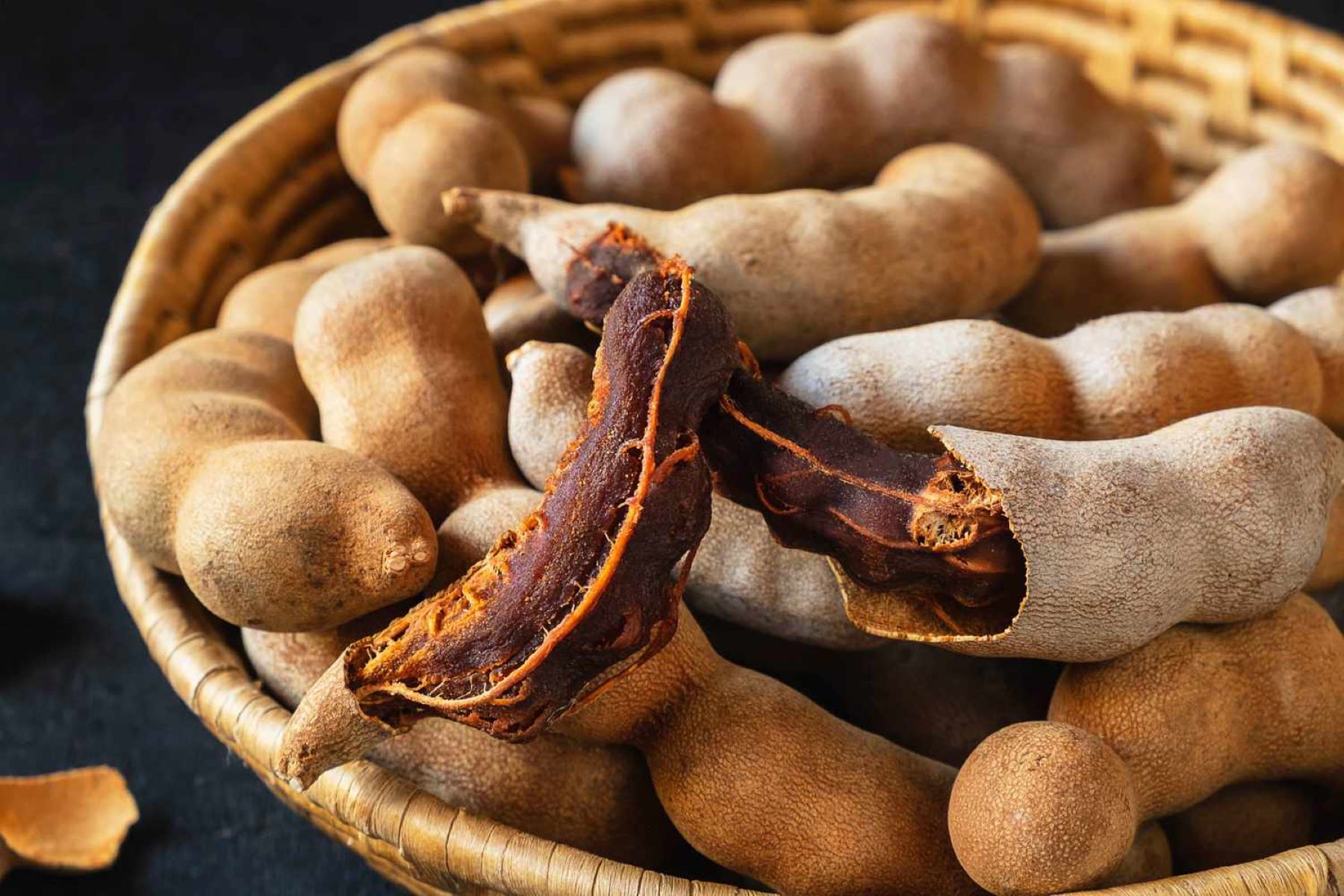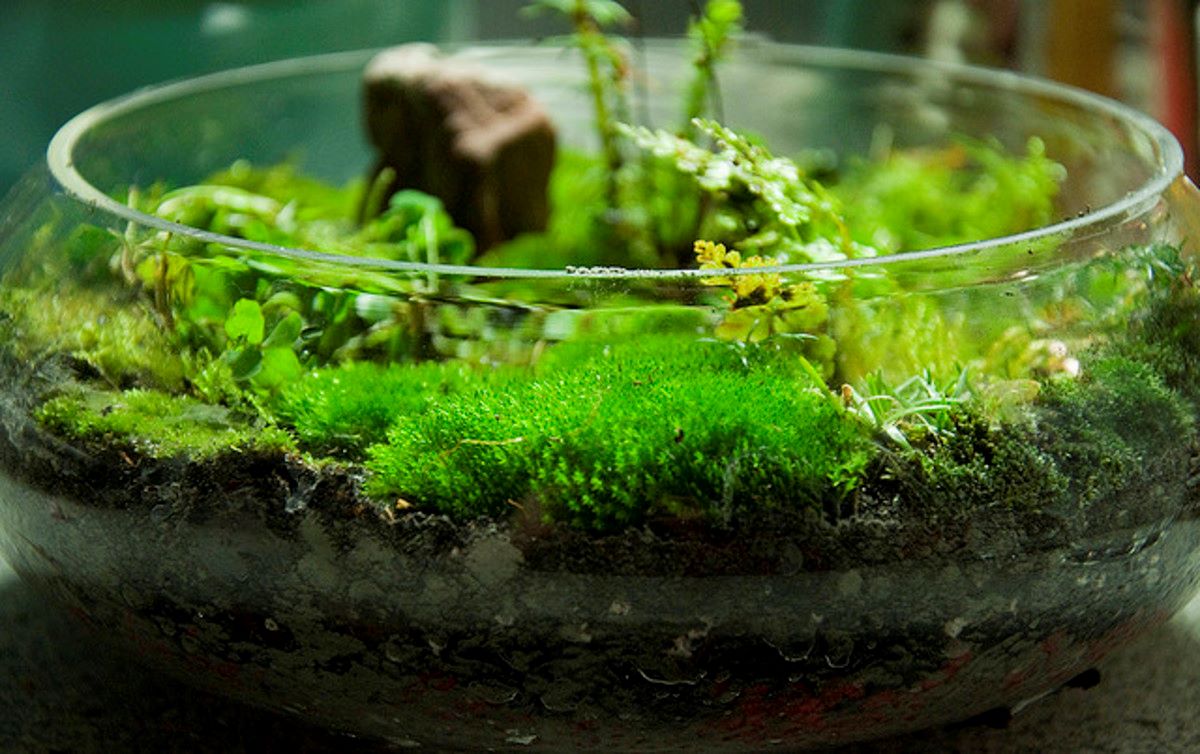

Articles
How To Store Tamarind
Modified: August 24, 2024
Learn effective methods and tips for storing tamarind in this comprehensive guide. Discover the best techniques in our articles section.
(Many of the links in this article redirect to a specific reviewed product. Your purchase of these products through affiliate links helps to generate commission for Storables.com, at no extra cost. Learn more)
Introduction
Tamarind is a popular ingredient used in various cuisines around the world for its unique sweet and tangy flavor. Whether you enjoy it as a refreshing beverage, a sauce, or a marinade, tamarind adds a delightful twist to your dishes. However, if you have a surplus of tamarind or want to make sure it stays fresh for future use, proper storage is essential.
In this article, we will explore the different types of tamarind and discuss the best methods for storing tamarind pods, tamarind paste, tamarind pulp, tamarind concentrate, tamarind candy, and tamarind juice. By following these tips, you can extend the shelf life of tamarind and ensure that it remains flavorful and usable for more extended periods.
Key Takeaways:
- Proper storage is essential for maintaining the freshness and flavor of tamarind, whether it’s in the form of pods, paste, pulp, concentrate, candy, or juice. Follow specific storage methods to ensure extended usability and delightful culinary experiences.
- Selecting fresh, high-quality tamarind and storing it correctly is crucial for enhancing the flavor and versatility of your dishes. Whether it’s wet or dry tamarind, paste, pulp, concentrate, candy, or juice, understanding the unique storage requirements will help you enjoy the delightful taste of tamarind for an extended period.
Read more: How To Use Tamarind Seeds
Understanding Tamarind
Tamarind is a tropical fruit that grows on the tamarind tree, scientifically known as Tamarindus indica. It is native to Africa but is now cultivated in many parts of the world, including Asia, South America, and the Caribbean.
The fruit of the tamarind tree comes in a pod-like structure that contains a sticky pulp and several seeds. The pulp is the main edible part of tamarind and is used in various forms, including paste, concentrate, and juice, to enhance the flavor of dishes.
Types of Tamarind
There are several types of tamarind available in the market, each with its unique characteristics and uses. The three main types of tamarind are as follows:
- Wet Tamarind: This type of tamarind is sold in its fresh or partially dried form, with the pulp still moist. It is commonly used in recipes that require the pulp to be extracted.
- Dry Tamarind: Dry tamarind is sun-dried or dehydrated tamarind pods. It is more concentrated in flavor and is often used to make tamarind paste or concentrate.
- Tamarind Paste: Tamarind paste is a processed form of tamarind, which is typically sold in jars or packets. It is convenient to use and saves time, as the pulp is already extracted and processed into a smooth paste.
Now that we have a basic understanding of tamarind and its various forms, let’s move on to exploring the best methods for storing different types of tamarind to keep them fresh and usable for a more extended period.
Key Takeaways:
- Proper storage is essential for maintaining the freshness and flavor of tamarind, whether it’s in the form of pods, paste, pulp, concentrate, candy, or juice. Follow specific storage methods to ensure extended usability and delightful culinary experiences.
- Selecting fresh, high-quality tamarind and storing it correctly is crucial for enhancing the flavor and versatility of your dishes. Whether it’s wet or dry tamarind, paste, pulp, concentrate, candy, or juice, understanding the unique storage requirements will help you enjoy the delightful taste of tamarind for an extended period.
Read more: How To Use Tamarind Seeds
Understanding Tamarind
Tamarind is a unique fruit that is widely used in culinary traditions around the world. It is native to tropical regions and is cultivated for its delicious sweet and tangy flavor. Tamarind belongs to the legume family and is known for its distinctive pod-like structure.
The tamarind tree, scientifically known as Tamarindus indica, can reach heights of up to 25 meters and has dense foliage. The fruit grows in clusters on the tree and is characterized by its hard outer shell. Inside the shell, you will find a dark brown pulp that surrounds multiple seeds.
The pulp is the main edible part of tamarind and is widely used in cooking for its unique taste and versatility. It has a tangy flavor with sweet and sour notes, making it a popular ingredient in both savory and sweet dishes.
Due to its rich flavor profile, tamarind is used in a variety of cuisines, including Thai, Indian, Mexican, and Caribbean. It is a key component in many traditional dishes such as Pad Thai, tamarind chutney, tamarind soup, and tamarind-based beverages.
Not only is tamarind valued for its taste, but it also offers several health benefits. It is a good source of vitamins and minerals, including vitamin C, B vitamins, iron, and potassium. Tamarind also contains antioxidants and has been linked to various health benefits, such as improved digestion, reduced inflammation, and enhanced cardiovascular health.
When using tamarind in recipes, it is important to note that different forms of tamarind have varying levels of concentration. Fresh tamarind pods, for example, have a milder flavor compared to tamarind paste or concentrate, which are more concentrated in taste.
By understanding the unique properties and flavor profile of tamarind, you can better appreciate its culinary uses and make informed choices when incorporating it into your favorite dishes.
Now that we have a better understanding of tamarind, let’s explore the various types of tamarind available and how to select the best quality tamarind for your recipes.
Types of Tamarind
When it comes to tamarind, there are several types available in the market, each with its own distinct characteristics and uses. Understanding these types can help you choose the right kind of tamarind for your recipes.
1. Wet Tamarind: This type of tamarind is also known as fresh tamarind or wet pulp tamarind. It is sold in its natural form, with the pods still containing the moist pulp. Wet tamarind is commonly used in recipes where the pulp needs to be extracted and used directly, such as in Indian chutneys or Thai dipping sauces. It has a milder and fresher flavor compared to other forms of tamarind.
2. Dry Tamarind: Dry tamarind is tamarind that has been dehydrated, either naturally under the sun or through artificial drying methods. The dehydration process removes the moisture from the pods, resulting in a more concentrated flavor. Dry tamarind is often used to make tamarind paste or concentrate, as it has a stronger and more intense taste. It is a convenient option as it can be stored for longer periods without spoilage.
3. Tamarind Paste: Tamarind paste is a processed form of tamarind that is widely available in grocery stores. It is made from the pulp extracted from tamarind pods, which is then processed and packaged in jars or tubes. Tamarind paste is a convenient option for those who want to save time and skip the step of extracting pulp from tamarind pods. It is thicker in consistency and has a concentrated tangy flavor. Many recipes, such as curries, sauces, and marinades, call for tamarind paste as an essential ingredient.
4. Tamarind Concentrate: Tamarind concentrate is similar to tamarind paste but has an even more concentrated flavor. It is typically used in recipes where a small amount of tamarind is needed to give a strong tangy taste. Tamarind concentrate is highly versatile and can be used in dressings, sauces, soups, beverages, and even desserts.
5. Tamarind Candy: Tamarind candy is a popular snack made by coating tamarind pulp with sugar or spices. It offers a delightful combination of sweet, sour, and tangy flavors. Tamarind candy is often consumed as a quick and enjoyable treat.
6. Tamarind Juice: Tamarind juice is made by extracting the pulp from tamarind pods and combining it with water and sugar. It is a refreshing and thirst-quenching drink that is commonly consumed in tropical regions. Tamarind juice can be enjoyed on its own or used as a base for mocktails and cocktails.
Now that you are familiar with the different types of tamarind available, you can choose the right form for your recipes and storage needs. In the next sections, we will discuss the best methods for storing each type of tamarind to ensure its freshness and quality over time.
Read more: How To Store Store-Bought Bread
Selecting Fresh Tamarind
When it comes to cooking with tamarind, using fresh and high-quality tamarind is essential to achieve the best flavor. Here are some tips to help you select fresh tamarind:
1. Look for plump and unblemished pods: When choosing fresh tamarind, opt for pods that are plump and free from any visible cracks or blemishes. The outer shell should be intact and not brittle. Avoid tamarind pods that appear shriveled or have damaged skin, as this can indicate poor quality or age.
2. Check the color: Fresh tamarind pods are typically reddish-brown or brown in color. The color should be uniform and consistent without any discoloration or signs of mold. Avoid tamarind pods that have a greenish hue, as this may indicate that the tamarind is not fully ripe.
3. Feel the texture: Gently squeeze the tamarind pods to assess their texture. Fresh tamarind should have a slightly firm feel, indicating that it is still moist and pliable. If the pods feel excessively hard or too soft and mushy, it may be a sign that the tamarind is either overripe or past its prime.
4. Check for freshness indicators: Fresh tamarind pods often have a subtle and pleasant aroma. The scent should be sweet with subtle citrus notes. If you notice any unpleasant or sour odor, it could indicate that the tamarind is spoiled or of poor quality.
5. Consider the weight: High-quality tamarind pods tend to be heavier due to their moisture content. When comparing different tamarind pods, choose the ones that feel heavier in your hand. Avoid lightweight pods, as they may indicate that the tamarind has dried out or is of lower quality.
6. Buy from reputable sources: To ensure the freshness and quality of tamarind, it is advisable to purchase it from reputable sources such as trusted grocery stores, markets, or specialty food stores. These sources are more likely to store and handle tamarind properly, maintaining its freshness until you purchase it.
By keeping these tips in mind, you can select fresh and high-quality tamarind for your culinary adventures. Fresh tamarind is not only more flavorful but also easier to handle when extracting the pulp or using it in various recipes. Once you have chosen your fresh tamarind, it’s time to learn how to store different forms of tamarind to preserve their taste and quality.
Storing Tamarind Pods
If you have purchased fresh tamarind pods or harvested them from your own tree, it’s important to store them properly to maintain their freshness and flavor. Follow these steps to store tamarind pods effectively:
1. Remove the outer shell: Start by removing the hard outer shell of the tamarind pod. This can be done by cracking the shell open with your hands or using a knife to carefully cut into the shell and remove it. Discard the shells as they are not edible.
2. Separate the pulp from the seeds: Once you have removed the outer shells, you will find sticky tamarind pulp surrounding the seeds. Separate the pulp from the seeds, ensuring that you have fully extracted the edible portion of the fruit.
3. Rinse the pulp: Rinse the tamarind pulp under cold running water to remove any dirt or debris that may be present. Gently rub the pulp with your fingers to clean it thoroughly.
4. Pat dry the pulp: After rinsing, pat dry the tamarind pulp with a clean kitchen towel or paper towel to remove excess moisture. Drying the pulp will help prevent it from spoiling quickly.
5. Store in an airtight container: Place the cleaned and dried tamarind pulp in an airtight container. You can use a glass jar or a plastic container with a tight-fitting lid. Ensure that the container is clean and dry before storing the tamarind pulp.
6. Store in a cool and dark place: Find a cool and dark spot in your pantry or kitchen cabinet to store the tamarind pod container. Avoid exposing it to direct sunlight or heat, as this can affect its quality and freshness. Ideally, the temperature should be around 50-70°F (10-20°C).
7. Check for moisture regularly: Tamarind pulp contains some moisture, so it’s important to check the container periodically for any signs of moisture buildup or mold. If you notice any moisture, remove the pulp, pat it dry again, and transfer it to a fresh container.
By following these steps, you can store tamarind pods for several weeks or even months, depending on the initial freshness of the fruit. Storing tamarind pods properly will ensure that you have a readily available supply of fresh tamarind for your cooking needs.
Now that you know how to store tamarind pods, let’s move on to discussing the best methods for storing other popular forms of tamarind, including tamarind paste, tamarind pulp, and tamarind concentrate.
Store tamarind in an airtight container in a cool, dry place away from direct sunlight. You can also freeze tamarind paste or whole pods for longer shelf life.
Storing Tamarind Paste
Tamarind paste is a convenient and widely used form of tamarind that adds a tangy and flavorful punch to various dishes. Whether you buy pre-packaged tamarind paste or make your own, proper storage is crucial to maintain its taste and quality. Here’s how to store tamarind paste effectively:
1. Choose the right container: It’s best to store tamarind paste in an airtight container that is also acid-resistant. Opt for glass jars or food-grade plastic containers with tight-fitting lids. Avoid metal containers as the acid in the tamarind paste can react with the metal, affecting the taste and quality.
2. Transfer the paste to the container: If you purchased tamarind paste in a plastic packet or from a block, transfer the paste to the chosen container. Use a clean and dry spoon or spatula to scoop out the paste and place it in the container. Avoid using wet or dirty utensils as they can introduce moisture and contaminants.
3. Seal the container tightly: Once the tamarind paste is in the container, ensure that the lid is tightly sealed to prevent air and moisture from entering. A secure seal will help maintain the freshness and prevent the paste from drying out or spoiling.
4. Store in a cool and dry place: Find a cool and dry spot in your pantry or kitchen cabinet to store the tamarind paste container. It’s important to keep the paste away from direct sunlight or heat sources, as these can cause the paste to lose its flavor and quality. Aim for a temperature between 50-70°F (10-20°C).
5. Check for spoilage signs: Regularly inspect the tamarind paste for any signs of spoilage, such as mold growth, discoloration, or an off smell. If you notice any of these signs, discard the paste and clean the container thoroughly before using it again.
6. Consider refrigeration (optional): While tamarind paste can be stored at room temperature, refrigeration can extend its shelf life. If you live in a hot and humid climate or if you want to keep the paste for a longer period, you can refrigerate it. However, keep in mind that refrigeration can cause the paste to harden, so you may need to let it come to room temperature before using.
By following these storage steps, tamarind paste can typically be kept for up to a year, depending on the quality and freshness of the paste. Remember to always use clean utensils when scooping out the paste to avoid introducing contaminants.
Now that you know how to store tamarind paste, let’s explore the best ways to store other common forms of tamarind, such as tamarind pulp and tamarind concentrate.
Storing Tamarind Pulp
Tamarind pulp is a versatile ingredient that is widely used in cooking to add a distinct tangy flavor to various dishes. Whether you extract the pulp from fresh tamarind pods or buy pre-packaged tamarind pulp, proper storage is essential to maintain its freshness and quality. Here’s how to store tamarind pulp effectively:
1. Remove any seeds or fibers: Start by ensuring that the tamarind pulp is free from any seeds or fibers. If you extracted the pulp from fresh tamarind pods, separate the pulp from the seeds and discard the seeds. Removing any fibers will ensure a smoother texture and better storage of the pulp.
2. Shape the pulp into a ball or block: To facilitate easier storage, shape the tamarind pulp into a ball or block. Use your hands to compress the pulp tightly into a cohesive shape. This helps prevent air exposure and keeps the pulp fresh for longer periods.
3. Wrap in plastic wrap or parchment paper: Once the tamarind pulp is shaped, wrap it tightly using plastic wrap or parchment paper. Make sure the wrapping is secure and covers the entire surface of the pulp to prevent any moisture loss or contamination.
4. Place in an airtight container: After wrapping the tamarind pulp, place it in an airtight container. Use a glass jar or a food-grade plastic container with a tight-fitting lid. This additional layer of protection will shield the pulp from air and help maintain its moisture content.
5. Store in a cool and dry place: Find a cool and dry spot in your pantry or kitchen cabinet to store the tamarind pulp container. Avoid exposing it to direct sunlight or heat, as this can cause the pulp to dry out or spoil. Aim for a temperature between 50-70°F (10-20°C).
6. Check for any changes: Periodically inspect the stored tamarind pulp for any signs of spoilage, such as mold growth, discoloration, or an off smell. If you notice any of these signs, discard the pulp and clean the container thoroughly before using it again.
By following these storage steps, tamarind pulp can typically be stored for up to several months, depending on its initial freshness and quality. Remember to always use clean utensils when handling the tamarind pulp to prevent introducing contaminants.
Now that you know how to store tamarind pulp, let’s explore the best ways to store other popular forms of tamarind, such as tamarind concentrate and tamarind candy.
Read more: How To Store Basil From Grocery Store
Storing Tamarind Concentrate
Tamarind concentrate is a highly concentrated form of tamarind that is commonly used in cooking to add a tangy and sour flavor to dishes. Proper storage of tamarind concentrate is essential to maintain its taste and quality. Here’s how to store tamarind concentrate effectively:
1. Choose the right container: Opt for a container that is specifically designed for storing acidic ingredients. Glass jars or food-grade plastic containers with tight-fitting lids are ideal for storing tamarind concentrate. Avoid metal containers as the acidity of the tamarind can react with the metal.
2. Transfer the concentrate to the container: If you purchased tamarind concentrate in a packet or container that is not suitable for long-term storage, transfer the concentrate to your chosen container. Use a clean spoon or spatula to scoop out the concentrate and place it in the container.
3. Seal the container securely: Ensure that the lid of the container is tightly sealed to prevent air from entering. A secure seal will help maintain the freshness and prevent the concentrate from drying out or losing its flavor.
4. Store in a cool and dry place: Find a cool and dry spot in your pantry or kitchen cabinet to store the tamarind concentrate container. Exposure to direct sunlight or heat can alter the taste and quality of the concentrate. Aim for a temperature between 50-70°F (10-20°C).
5. Check for spoilage signs: Regularly inspect the tamarind concentrate for any signs of spoilage, such as mold growth, discoloration, or an off smell. If you notice any of these signs, discard the concentrate and clean the container thoroughly before using it again.
6. Consider refrigeration (optional): Tamarind concentrate is generally shelf-stable at room temperature, but refrigeration can help prolong its shelf life. If you live in a hot and humid climate or if you want to keep the concentrate for an extended period, you can refrigerate it. However, keep in mind that refrigeration may cause the concentrate to thicken, so you may need to let it come to room temperature before using.
By following these storage steps, tamarind concentrate can typically be stored for several months, depending on its initial quality. Remember to always use clean utensils when scooping out the concentrate to prevent introducing contaminants.
Now that you know how to store tamarind concentrate, let’s explore the best ways to store other popular forms of tamarind, such as tamarind candy and tamarind juice.
Storing Tamarind Candy
Tamarind candy is a delicious and tangy treat enjoyed by many. Whether you purchased tamarind candy or made it at home, proper storage is essential to maintain its taste and texture. Here’s how to store tamarind candy effectively:
1. Choose the right packaging: Tamarind candy often comes in individual wrappers or small bags. If the candy is already packaged, ensure that the wrappers or bags are sealed and intact. If you made the candy at home, place it in an airtight container suitable for storing sweets.
2. Keep in a cool and dry place: Tamarind candy should be stored in a cool and dry spot, away from direct sunlight or heat sources. Elevated temperatures can cause the candy to become sticky or melt. Aim for a temperature between 50-70°F (10-20°C).
3. Avoid moisture exposure: Moisture can cause tamarind candy to become sticky or attract mold. Store the candy in a moisture-free environment to maintain its texture and quality. Avoid storing it near sources of moisture like the sink or refrigerator.
4. Check for spoilage signs: Regularly inspect the tamarind candy for any signs of spoilage, such as mold growth, discoloration, or an unusual odor. If you notice any of these signs, discard the candy to ensure your safety and enjoyment.
5. Keep away from strong odors: Tamarind candy has a distinct flavor and aroma that can be easily absorbed by nearby strong-smelling substances. Store the candy away from pungent spices, cleaning chemicals, or other strong odors that can alter its taste.
6. Consider refrigeration (optional): While not necessary, refrigeration can help prolong the shelf life of tamarind candy, especially in warm and humid conditions. However, refrigeration may cause the candy to become harder. If you refrigerate the candy, allow it to come to room temperature before consuming for optimal texture.
By following these storage guidelines, tamarind candy can typically be stored for several months, depending on its ingredients and quality. Enjoy the candy as a sweet and tangy treat whenever you crave a burst of tamarind flavor.
Now that you know how to store tamarind candy, let’s explore the best ways to store another popular form of tamarind, tamarind juice.
Storing Tamarind Juice
Tamarind juice is a refreshing and tangy beverage that can be enjoyed on its own or used as a base for various drinks and recipes. If you have freshly made tamarind juice or store-bought tamarind juice, proper storage will help maintain its flavor and quality over time. Here’s how to store tamarind juice effectively:
1. Transfer to a sealable container: If you have made tamarind juice at home or have a bottle of pre-packaged tamarind juice, transfer it to a suitable container with a tight-sealing lid. Glass bottles or food-grade plastic containers are ideal for storing tamarind juice.
2. Refrigerate for longevity: Tamarind juice is best stored in the refrigerator to maintain its freshness and extend its shelf life. Place the sealed container of tamarind juice in the refrigerator soon after making or opening it. The cooler temperature will help slow down the natural oxidation process and prevent the growth of bacteria or yeast.
3. Check for signs of spoilage: Regularly inspect the tamarind juice for any signs of spoilage, such as mold growth, unusual coloring, or off smell. If you notice any of these signs, discard the juice to ensure consumption safety and quality taste.
4. Use within a few days to a week: Tamarind juice, when refrigerated, can typically retain its freshness for up to a week. However, it’s best to consume it within a few days for optimal taste and quality. Over time, the juice may start to lose its brightness and develop a slightly fermented taste.
5. Shake well before serving: Before pouring or serving tamarind juice, give the container a good shake to mix any settled pulp or sediment. This will ensure a consistent flavor profile in every serving and enhance the overall drinking experience.
6. Consider freezing (optional): If you have a large quantity of tamarind juice and want to keep it for an extended period, you can freeze it in an airtight container or ice cube trays. Freezing preserves the flavor and freshness of the juice for several months. Thaw the frozen juice in the refrigerator for a few hours before using.
By following these storage tips, you can enjoy the tangy and refreshing taste of tamarind juice for an extended period. Whether you drink it as is or use it as an ingredient in cocktails, mocktails, or other recipes, properly stored tamarind juice will always satisfy your taste buds.
Now that you know how to store tamarind juice, let’s conclude our discussion on tamarind storage.
Conclusion
Tamarind is a versatile and flavorful ingredient that adds a unique sweet and tangy taste to a variety of dishes. Whether you have tamarind pods, tamarind paste, tamarind pulp, tamarind concentrate, tamarind candy, or tamarind juice, proper storage is key to preserving their freshness and quality.
When selecting fresh tamarind, look for plump pods with uniform color and a slightly firm texture. Avoid any signs of damage or discoloration. For tamarind paste, transfer it to an airtight container and store it in a cool, dry place away from direct sunlight. Tamarind pulp should be shaped into a ball or block, wrapped tightly, and stored in an airtight container. Tamarind concentrate, tamarind candy, and tamarind juice can be stored in sealed containers, refrigerated for extended shelf life, and checked regularly for signs of spoilage.
By following these storage guidelines, you can ensure that your tamarind stays fresh and maintains its unique flavor for an extended period of time. Properly stored tamarind allows you to create delicious and authentic dishes whenever the craving strikes.
Whether you enjoy the tangy taste of tamarind in savory curries, tangy chutneys, refreshing beverages, or zesty marinades, knowing how to store tamarind correctly will enhance your culinary experiences and bring out the best flavors in your dishes.
So next time you have tamarind on hand, remember these storage tips and savor the incredible taste and versatility that this tropical fruit offers. Happy cooking and enjoy the delightful flavors of tamarind!
Frequently Asked Questions about How To Store Tamarind
Was this page helpful?
At Storables.com, we guarantee accurate and reliable information. Our content, validated by Expert Board Contributors, is crafted following stringent Editorial Policies. We're committed to providing you with well-researched, expert-backed insights for all your informational needs.














0 thoughts on “How To Store Tamarind”